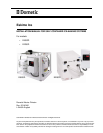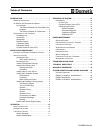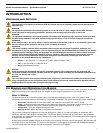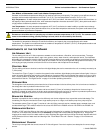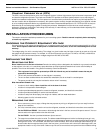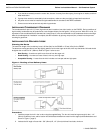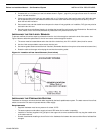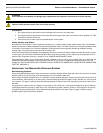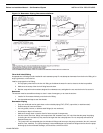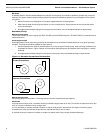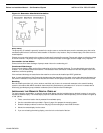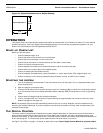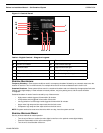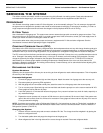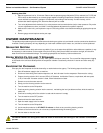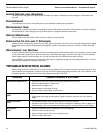
INSTALLATION PROCEDURES Eskimo Ice Installation Manual - Self-Contained System
6 L-2448A ENGLISH
Procedure
1. Run copper tubing or equivalent from the freshwater source to the in-line water filter.
2. Run copper tubing or equivalent from the water filter to the auger water input, and connect with the supplied 1/4" SAE
male flare connection on the unit.
3. Ensure there are no leaks in the field-installed portion of the system.
Water Quality and Filters
No water from a municipality is “pure” feedwater, but water from a vessel’s onboard water maker comes close. The feedwater
problem is that water contains suspended and dissolved feedwater solids. Pure water freezes first, leaving the feedwater solids
to increase in concentration in the unfrozen feedwater. Solids also bond to the evaporator wall during feedwater freezing,
forming scale. Eventually, built-up scale will shorten machine life.
A filter must always be used, preferably one supplied by Dometic for use with ice makers. Replace the filter at least twice yearly,
or more often if the machine is used frequently. While filters help clean the water, a yearly cleaning of the evaporator barrel is
required. See “Evaporator Cleaning” on page 13 of the “OWNER MAINTENANCE” section.
Using saltwater to make ice is not approved by Dometic. Saltwater is very corrosive, and it contains many more dissolved and
suspended solids than freshwater. If you want a brine solution for your catch, we suggest sprinkling salt over the ice in the
storage box. USE OF SALTWATER AS FEEDWATER IN ANY DOMETIC ICE MAKER WILL CAUSE SEVERE DAMAGE AND
VOID THE WARRANTY!
INSTALLING THE SEAWATER COOLING SYSTEM
Self-Draining System
A poorly plumbed seawater system is the most common installation problem. When water flow is lost, not only will the ice maker
cease to produce ice, but the pump could be damaged from running without water flow.
When using a centrifugal seawater pump, it is imperative that the seawater piping be routed continually uphill from the thru-hull
to the condenser, then smoothly up or down to the overboard discharge without any dips or loops, and with only one high point
in the system. This type of routing is called self-draining because all water will drain out of the piping if the boat is taken out of
the water.
If air gets into the system, which can happen in heavy seas or with a sharp turn, it can become trapped in the pump. Because
centrifugal pumps cannot pump air, water flow is lost. A self-draining system, however, allows air in the piping to rise naturally
through the pump and be expelled. It also makes winterizing the system much easier. Figure 3, page 7 shows a properly
plumbed system and some common mistakes.
WARNING
Use of saltwater as feedwater will damage auger components and evaporator barrel and will void the warranty.
WARNING
Failure to install and use a water filter will void the warranty.



